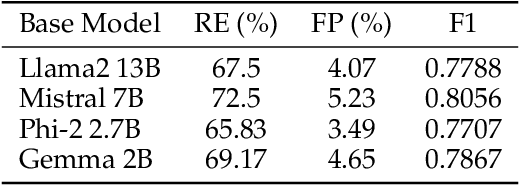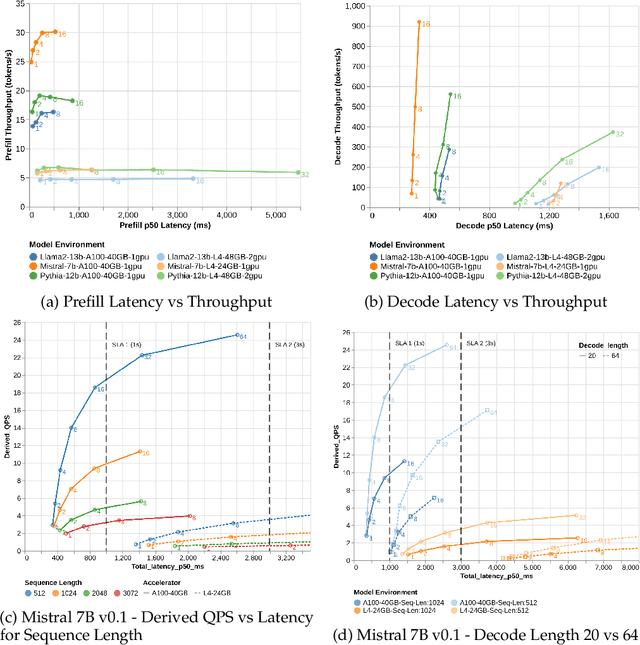Ayan Kumar Bhowmick
Leveraging the Power of LLMs: A Fine-Tuning Approach for High-Quality Aspect-Based Summarization
Aug 05, 2024



Abstract:The ever-increasing volume of digital information necessitates efficient methods for users to extract key insights from lengthy documents. Aspect-based summarization offers a targeted approach, generating summaries focused on specific aspects within a document. Despite advancements in aspect-based summarization research, there is a continuous quest for improved model performance. Given that large language models (LLMs) have demonstrated the potential to revolutionize diverse tasks within natural language processing, particularly in the problem of summarization, this paper explores the potential of fine-tuning LLMs for the aspect-based summarization task. We evaluate the impact of fine-tuning open-source foundation LLMs, including Llama2, Mistral, Gemma and Aya, on a publicly available domain-specific aspect based summary dataset. We hypothesize that this approach will enable these models to effectively identify and extract aspect-related information, leading to superior quality aspect-based summaries compared to the state-of-the-art. We establish a comprehensive evaluation framework to compare the performance of fine-tuned LLMs against competing aspect-based summarization methods and vanilla counterparts of the fine-tuned LLMs. Our work contributes to the field of aspect-based summarization by demonstrating the efficacy of fine-tuning LLMs for generating high-quality aspect-based summaries. Furthermore, it opens doors for further exploration of using LLMs for targeted information extraction tasks across various NLP domains.
Building a Domain-specific Guardrail Model in Production
Jul 24, 2024



Abstract:Generative AI holds the promise of enabling a range of sought-after capabilities and revolutionizing workflows in various consumer and enterprise verticals. However, putting a model in production involves much more than just generating an output. It involves ensuring the model is reliable, safe, performant and also adheres to the policy of operation in a particular domain. Guardrails as a necessity for models has evolved around the need to enforce appropriate behavior of models, especially when they are in production. In this paper, we use education as a use case, given its stringent requirements of the appropriateness of content in the domain, to demonstrate how a guardrail model can be trained and deployed in production. Specifically, we describe our experience in building a production-grade guardrail model for a K-12 educational platform. We begin by formulating the requirements for deployment to this sensitive domain. We then describe the training and benchmarking of our domain-specific guardrail model, which outperforms competing open- and closed- instruction-tuned models of similar and larger size, on proprietary education-related benchmarks and public benchmarks related to general aspects of safety. Finally, we detail the choices we made on architecture and the optimizations for deploying this service in production; these range across the stack from the hardware infrastructure to the serving layer to language model inference optimizations. We hope this paper will be instructive to other practitioners looking to create production-grade domain-specific services based on generative AI and large language models.
Better RAG using Relevant Information Gain
Jul 16, 2024



Abstract:A common way to extend the memory of large language models (LLMs) is by retrieval augmented generation (RAG), which inserts text retrieved from a larger memory into an LLM's context window. However, the context window is typically limited to several thousand tokens, which limits the number of retrieved passages that can inform a model's response. For this reason, it's important to avoid occupying context window space with redundant information by ensuring a degree of diversity among retrieved passages. At the same time, the information should also be relevant to the current task. Most prior methods that encourage diversity among retrieved results, such as Maximal Marginal Relevance (MMR), do so by incorporating an objective that explicitly trades off diversity and relevance. We propose a novel simple optimization metric based on relevant information gain, a probabilistic measure of the total information relevant to a query for a set of retrieved results. By optimizing this metric, diversity organically emerges from our system. When used as a drop-in replacement for the retrieval component of a RAG system, this method yields state-of-the-art performance on question answering tasks from the Retrieval Augmented Generation Benchmark (RGB), outperforming existing metrics that directly optimize for relevance and diversity.
On The Persona-based Summarization of Domain-Specific Documents
Jun 06, 2024



Abstract:In an ever-expanding world of domain-specific knowledge, the increasing complexity of consuming, and storing information necessitates the generation of summaries from large information repositories. However, every persona of a domain has different requirements of information and hence their summarization. For example, in the healthcare domain, a persona-based (such as Doctor, Nurse, Patient etc.) approach is imperative to deliver targeted medical information efficiently. Persona-based summarization of domain-specific information by humans is a high cognitive load task and is generally not preferred. The summaries generated by two different humans have high variability and do not scale in cost and subject matter expertise as domains and personas grow. Further, AI-generated summaries using generic Large Language Models (LLMs) may not necessarily offer satisfactory accuracy for different domains unless they have been specifically trained on domain-specific data and can also be very expensive to use in day-to-day operations. Our contribution in this paper is two-fold: 1) We present an approach to efficiently fine-tune a domain-specific small foundation LLM using a healthcare corpus and also show that we can effectively evaluate the summarization quality using AI-based critiquing. 2) We further show that AI-based critiquing has good concordance with Human-based critiquing of the summaries. Hence, such AI-based pipelines to generate domain-specific persona-based summaries can be easily scaled to other domains such as legal, enterprise documents, education etc. in a very efficient and cost-effective manner.
Long Dialog Summarization: An Analysis
Feb 26, 2024Abstract:Dialog summarization has become increasingly important in managing and comprehending large-scale conversations across various domains. This task presents unique challenges in capturing the key points, context, and nuances of multi-turn long conversations for summarization. It is worth noting that the summarization techniques may vary based on specific requirements such as in a shopping-chatbot scenario, the dialog summary helps to learn user preferences, whereas in the case of a customer call center, the summary may involve the problem attributes that a user specified, and the final resolution provided. This work emphasizes the significance of creating coherent and contextually rich summaries for effective communication in various applications. We explore current state-of-the-art approaches for long dialog summarization in different domains and benchmark metrics based evaluations show that one single model does not perform well across various areas for distinct summarization tasks.
Automating question generation from educational text
Sep 26, 2023Abstract:The use of question-based activities (QBAs) is wide-spread in education, traditionally forming an integral part of the learning and assessment process. In this paper, we design and evaluate an automated question generation tool for formative and summative assessment in schools. We present an expert survey of one hundred and four teachers, demonstrating the need for automated generation of QBAs, as a tool that can significantly reduce the workload of teachers and facilitate personalized learning experiences. Leveraging the recent advancements in generative AI, we then present a modular framework employing transformer based language models for automatic generation of multiple-choice questions (MCQs) from textual content. The presented solution, with distinct modules for question generation, correct answer prediction, and distractor formulation, enables us to evaluate different language models and generation techniques. Finally, we perform an extensive quantitative and qualitative evaluation, demonstrating trade-offs in the use of different techniques and models.
 Add to Chrome
Add to Chrome Add to Firefox
Add to Firefox Add to Edge
Add to Edge